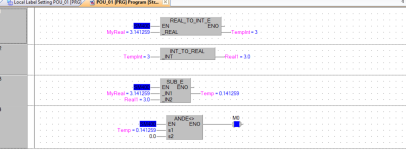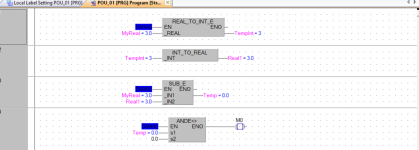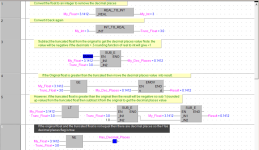Try this if you want to find if the number has decimal places that are not 0
So for example if converting the real to integer rounds up or not the result here will be non zero so for example 3.121234 as an integer will be 3
3.146823 will be 4
so by converting the integer back to a float and sub it from the original float will give you a non zero number i.e. either negative or positive so check for non zero therefore you have decimal places

So for example if converting the real to integer rounds up or not the result here will be non zero so for example 3.121234 as an integer will be 3
3.146823 will be 4
so by converting the integer back to a float and sub it from the original float will give you a non zero number i.e. either negative or positive so check for non zero therefore you have decimal places








